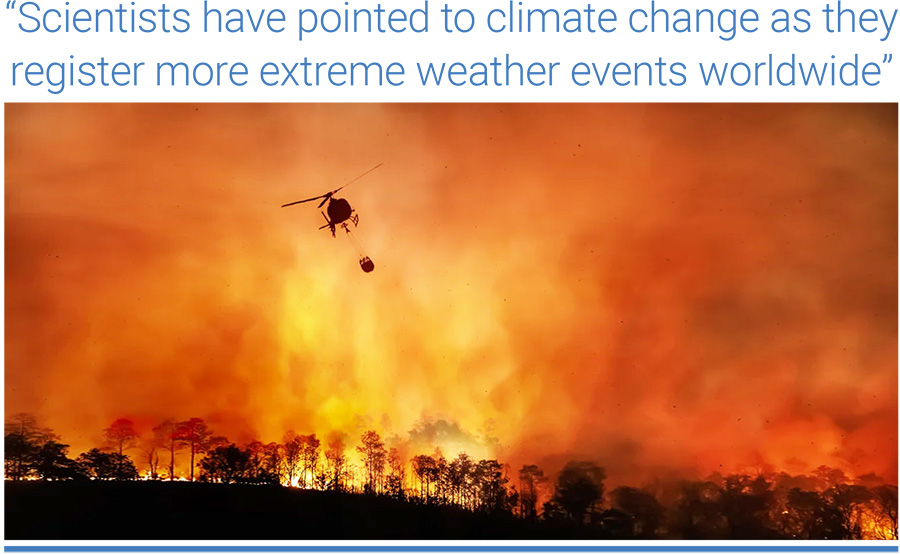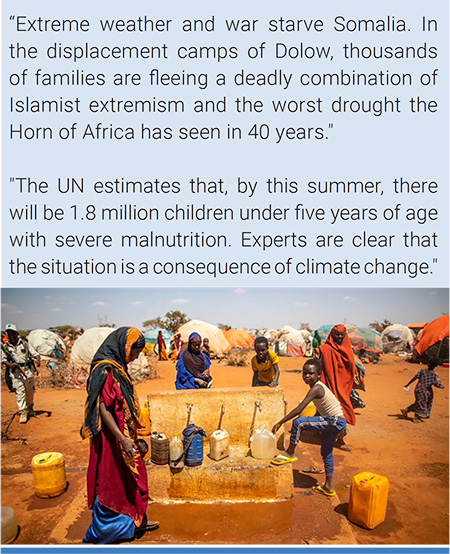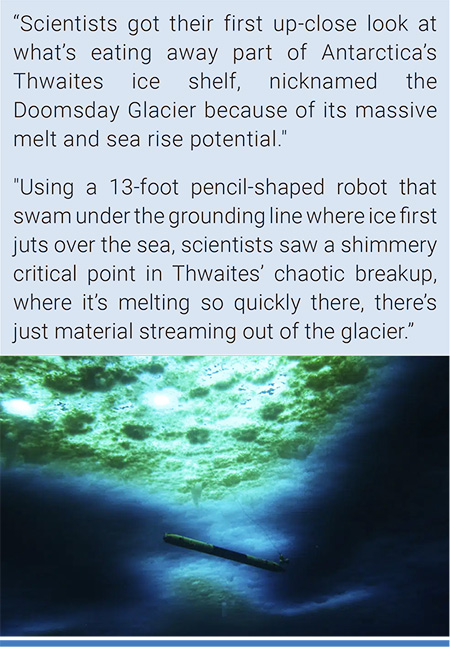Monthly Summaries
Issue 74, February 2023
[DOI]

The Chilean government extended an emergency order and called for international help as deadly forest fires continued to tear through the country. Photo: Toa55/Shutterstock.
February media coverage of climate change or global warming in newspapers around the globe decreased 15% from January 2023 but remained 14% higher than February 2022 levels. International wire services dipped 27% while radio coverage similarly dropped 26% from January 2023. Compared to the previous month, coverage was down in Asia (-5%), Africa (-17%), Latin America (-19%), the European Union (EU) (-22%), North America (-22%), and the Middle East (-30%). Meanwhile, coverage increased in Oceania (+22%). Figure 1 shows trends in newspaper media coverage at the global scale – organized into seven geographical regions around the world – from January 2004 through February 2023.

Figure 1. Newspaper media coverage of climate change or global warming in print sources in seven different regions around the world, from January 2004 through February 2023.
Among countries that we at the Media and Climate Change Observatory (MeCCO) monitor, United States (US) print coverage dropped 16% while television coverage decreased 30% from January.

Figure 2. Newspaper coverage of climate change or global warming in US newspapers Washington Post, Wall Street Journal, New York Times, USA Today, and Los Angeles Times from January 2004 through February 2023.
Turning to the content of coverage, media attention to climate change or global warming was punctuated with ecological and meteorological themes. For instance, several disaster events across South America generated news coverage. For example, Washington Post journalists Ellen Francis and Naomi Schnanen reported, “Hundreds of wildfires scorching southern and central Chile have left at least 23 people dead and hundreds more injured and displaced from their homes. The latest death toll came from the country’s Senapred disaster response agency, which added that emergency alerts were sent to another region as firefighters combat the flames…Scientists have pointed to climate change as they register more extreme weather events worldwide”. As a second example, El Mundo journalist Sebastián Fest wrote, “Summer is closing in the Southern Cone amid climatic tragedies in the Pacific and the Atlantic. If in Chile fire is the destructive element, in Brazil it is water, in both cases with virulence and intensities rarely seen. A single week in February, the first, was enough for Chile to burn a number of hectares equivalent to those lost in two years of fires. And in Brazil, the coast of the State of Sao Paulo and part of that of Santa Catarina saw more rain fall in one day than ever before: 683 millimeters in 15 hours in municipalities such as Sao Sebastiao or Bertioga (...) In Chile, 24 people died, in Brazil, 64 and there are 40 missing. And the numbers could continue to grow. The tragedy was conceived in the south, with the advance of a cold front of unprecedented power that led Buenos Aires to experience the highest temperatures in the last half century in February (38.1) and, just five days later, the lowest in 62 years, with 6.9 degrees”.
Also in February, the arrival of Cyclone Gabrielle in New Zealand after previous flooding linked to climate change earned media attention. For example, Washington Post journalists Rachel Pannett and Dan Stillman reported, “New Zealand’s government declared a rare state of emergency as a cyclone lashed the country, causing destructive floods and landslips for the second time in a matter of weeks, underscoring the challenges in adapting to more frequent severe weather crises…The back-to-back storms have sparked a national reckoning about New Zealand’s resilience to future threats, as climate change fuels more extreme weather systems such as these. During the January storm, new all-time daily rainfall records in Auckland were reported by the country’s National Institute of Water and Atmospheric Research (NIWA). Auckland Airport was closed because of floodwater inside the terminal. The airport observing station recorded five inches of rain within two hours”.
A woman and a child fill their containers with water at one of the taps installed by humanitarian organizations in the displacement camp in Dolow, Somalia. Photo: Álvaro García. |
Meanwhile, in the Mediterranean, corals were 'scorched' by the summer heat waves, given that "high temperatures occur with increasing frequency and destroy ecosystems" according to La Vanguardia journalist Joaquim Elcacho. Furthermore, the canals of Venice remained empty as El País journalist Daniel Verdú wrote, “The unusual drop in the water level in the Venetian canals, caused by various atmospheric phenomena, adds to a severe drought in northern Italy”.
Ecological and meteorological media stories with links to climate change pervaded the African continent in February as well. For example, El País journalist Pablo Guimón noted, “Extreme weather and war starve Somalia. In the displacement camps of Dolow, thousands of families are fleeing a deadly combination of Islamist extremism and the worst drought the Horn of Africa has seen in 40 years. Somalia has two rainy seasons a year, and in a society dominated by a subsistence agricultural economy, thousands of households are pushed to the brink if water does not arrive. It happens that the last five rainy seasons have failed. And no one expects much from the next one either. At least 3.8 million Somalis have fled their homes, many huddled in displacement camps like the five that have sprung up around Dolow. The UN estimates that, by this summer, there will be 1.8 million children under five years of age with severe malnutrition. Experts are clear that the situation is a consequence of climate change. Science shows that droughts and other extreme events, such as torrential rains, are now more frequent. The cycle of disasters is shortened. Global warming effects. A phenomenon, produced by the emissions of developed countries, which is primed with Somalia despite the fact that the country has little responsibility: it barely generates as many CO₂ emissions as Andorra”.

Figure 3. Newspaper front page stories in February with links to climate change and climate risks.
In January, various cultural stories relating to climate change or global warming were evident in wider news coverage. To illustrate, the melding of the politicization of investment choices was noted in media accounts of ‘culture wars’ associated with climate change in the US. For example, New York Times journalist David Gelles reported, “It’s been a widely accepted trend in financial circles for nearly two decades. But suddenly, Republicans have launched an assault on a philosophy that says that companies should be concerned with not just profits but also how their businesses affect the environment and society. More than $18 trillion is held in investment funds that follow the investing principle known as E.S.G. — shorthand for prioritizing environmental, social and governance factors — a strategy that has been adopted by major corporations around the globe. Now, Republicans around the country say Wall Street has taken a sharp left turn, attacking what they term “woke capitalism” and dragging businesses, their onetime allies, into the culture wars…Senator Sheldon Whitehouse, Democrat of Rhode Island, said he believed the Republican position on E.S.G. was more about ginning up outrage than about just how much of a financial risk climate change posed to long term investments. “They invent culture-war provocations that drive clicks, and woke capitalism is part of that,” he said”.
The pencil-shaped robot is giving scientists their first look at the forces eating away at the Thwaites glacier. Photo: Schmidt/Lawrence/Icefin/NASA PSTAR RISE UP via AP. |
Many scientific themes continued to emerge in media stories during the month of January through new studies, reports, and assessments. For instance, research finding record levels of sea ice loss near Antarctica gained media attention. For example, Associated Press journalist Seth Borenstein reported on a study in Nature writing, “Scientists got their first up-close look at what’s eating away part of Antarctica’s Thwaites ice shelf, nicknamed the Doomsday Glacier because of its massive melt and sea rise potential, and it’s both good and bad news. Using a 13-foot pencil-shaped robot that swam under the grounding line where ice first juts over the sea, scientists saw a shimmery critical point in Thwaites’ chaotic breakup, “where it’s melting so quickly there, there’s just material streaming out of the glacier,” said robot creator and polar scientist Britney Schmidt of Cornell University. Before, scientists had no observations from this critical but hard-to-reach point on Thwaites. But with the robot named Icefin lowered down a slender 1,925-foot (587-meter) hole, they saw how important crevasses are in the fracturing of the ice, which takes the heaviest toll on the glacier, even more than melting”.
Finally, political and economic-themed media stories about climate change or global warming continued to roll out in the month of January. For example, several news stories covered the development that the European Union took steps towards the decarbonization of its land transport in February. El País journalist Silvia Ayuso noted, “The European Parliament has given its final approval to the ban, since 2035, on the sale in European territory of new combustion cars and vans, including gasoline, diesel and hybrid ones…From Brussels, the European Commission launched a proposal that seeks to go further: accelerate the green transition also among heavy vehicles -trucks and buses- for which it has proposed new, more “ambitious” goals to reduce CO2 emissions. It is not a trivial issue: trucks, urban and long-distance buses are, Brussels stresses, responsible for more than 6% of the total greenhouse gas emissions in the EU and 25% of those from road transport”.
Thanks for your interest in our Media and Climate Change Observatory (MeCCO) work monitoring media coverage of these intersecting dimensions and themes associated with climate change and global warming.
- report prepared by Max Boykoff, Presley Church, Rogelio Fernández-Reyes, Jennifer Katzung, Ami Nacu-Schmidt and Olivia Pearman



